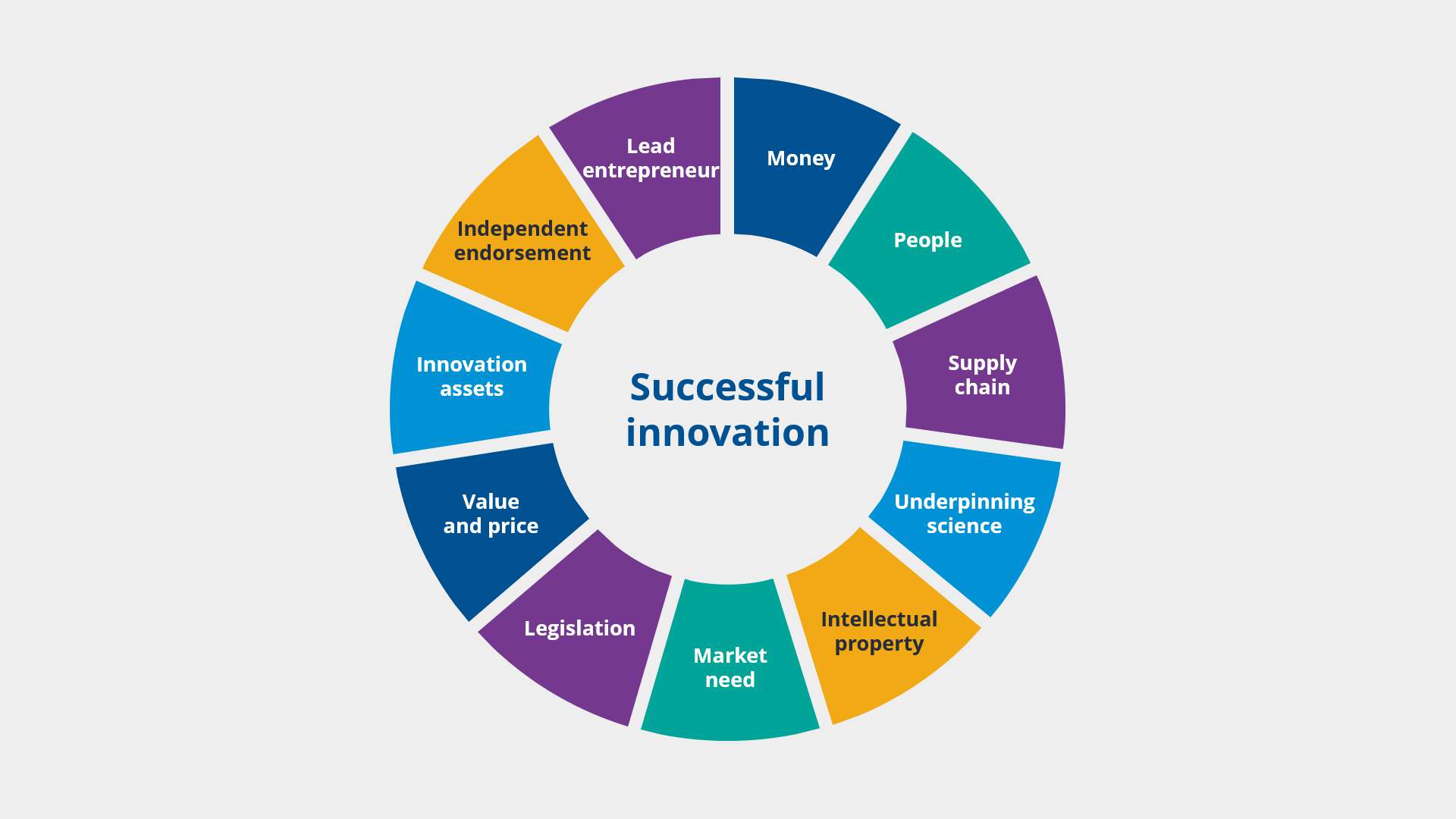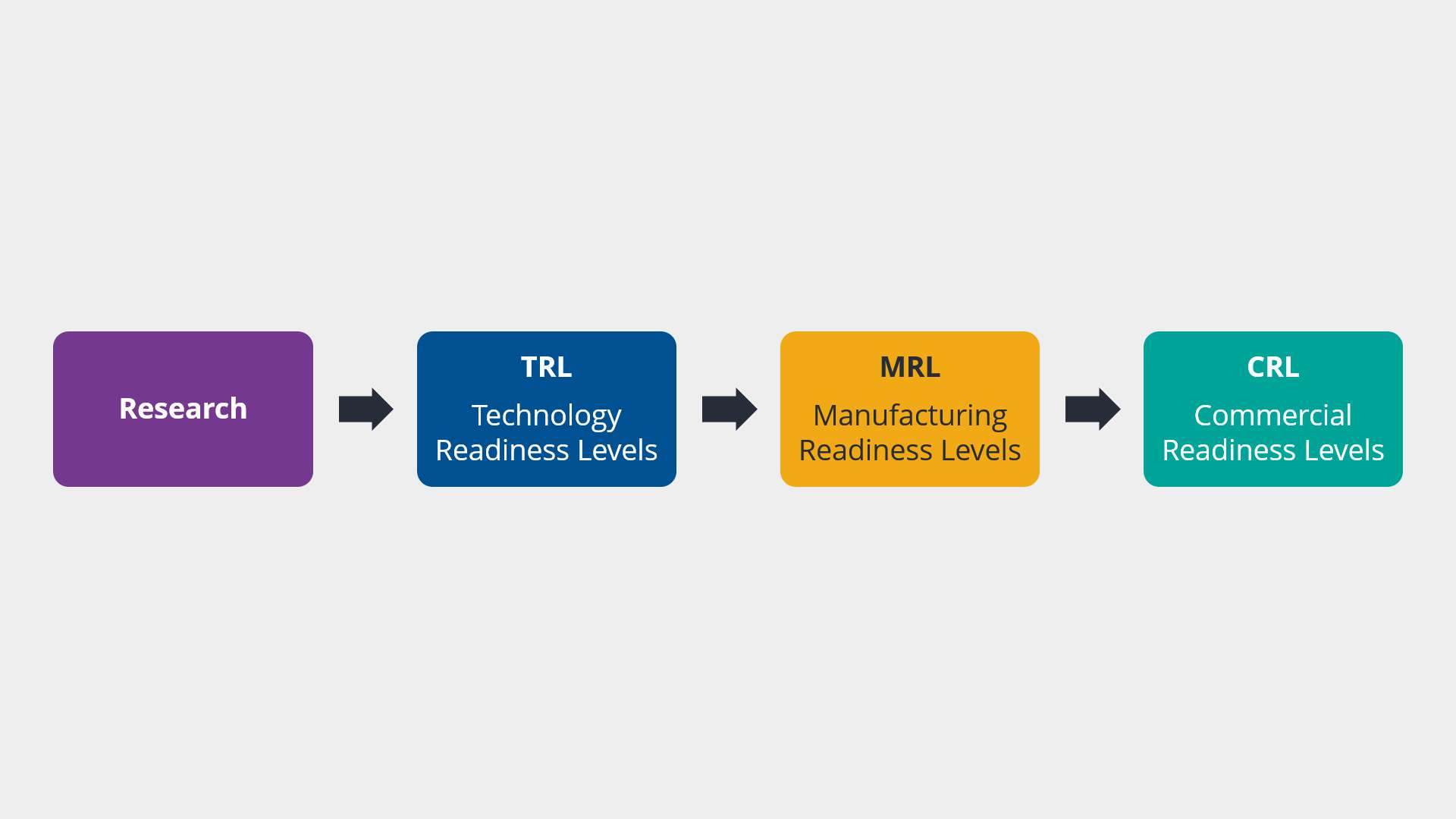Innovation: What is it and how to do it?
Innovation is the lifeblood of any economy, but there is often confusion on the difference between invention and innovation, so what distinguishes the two?

Advisor

Innovation is the lifeblood of any successful economy, turning ideas into products, processes and services that help it to grow. There is often some confusion about the difference between invention and innovation, so what distinguishes the two?
What is innovation?
Put simply, innovation is the art or science of translating existing inventions and ideas into practical products, processes or services that can be used in everyday life. An invention, on the other hand, is something that was previously undiscovered. For instance, creating a new pharmaceutical ingredient is a good example of an invention. While an innovation would be using that ingredient to develop a new medicine, delivering that medicine to a patient and then administering it.
Innovation is a vital part of a successful ‘knowledge economy’. This type of economy needs: research to invent or discover new things; innovation to link these new inventions with existing knowledge to create usable products or services; development activity to make the innovation ready for market with a profitable supply chain; and businesses that create value within the economy by reliably and consistently supplying the innovative product or service to the market profitably.
The UK is renowned for its research and invention. Because of this, a number of multi-national companies have decided to establish major research, development and manufacturing centres in the country. There is also a strong private investment community within the UK. Despite these strengths, the UK is less effective at the innovation that translates its research into commercial businesses. In 2005, the UK created Catapult centres such as CPI – which is part of the High Value Manufacturing Catapult – as a public/private infrastructure to deliver open-access innovation services that would help the UK become more effective at creating value from its leading research base.
How to enable innovation
There are a few factors that need to be addressed for innovation to be successful. Firstly, there needs to be a change in the market, product or service that leads to a new product or service being in demand. Once the product or service is developed, a supply chain must then be established to deliver it to the people that need it. Specifiers, legislators and regulators will also have to support the adoption of the new product. There also needs to be an attractive value/price combination, meaning the product or service has to have a price that people are prepared to pay for the value it brings them. Something that is often forgotten is that it can take many years for an innovation to get to the market. Therefore, the people and companies that are making the innovation need to have a long-term commitment to its success and they need to collaborate with other organisations to realise what is often initially a dream. Finally, independent endorsement from outside stakeholders is crucial.
Most often, innovations fail due to a lack of understanding about the market. The ‘valley of death’ is when innovations fail to make it to commercialisation because the market is not ready for them. By providing open-access innovation services, centres like CPI can help innovators assess their ideas and get them to market more quickly, efficiently and at lower risk.
Creating an open-access innovation centre
Over its 15-year history, CPI has created 5 national innovation centres that cover the needs of the process industries. As a result, CPI has a tried and documented process for scoping, funding and building a centre.
To create a successful innovation centre, it is important to first outline a concept that describes what need the centre is going to serve. Once this has been agreed with the different partners, a full scope can then be developed, including how it might operate within the market. It is essential that the partners develop a vision that describes how innovation can meet market needs for the next 5 to 15 years. After this definition and planning period, a full business case can be defined and then implemented. Once up and running, the centre needs to be continuously evaluated and monitored to ensure that it retains the capability and relevance that the partners need.
CPI’s innovation model
A systematic approach to both project development and delivery is essential in order to deliver the needs of organisations involved in innovation. CPI offers an integrated process that supports universities, SMEs and large corporates to overcome the challenges associated with innovation. This process is centred on CPI’s belief that there are three stages: Invention, Innovation and Commercialisation. The use of CPI’s Innovation Integrator model helps partners manage their innovation process.

This model is a structured diagnostic tool that is designed to understand where a company is situated within the innovation continuum. First, it identifies whether a company is in Invention, Innovation or Commercialisation and once this is known, the model identifies up to 6 factors that need to be addressed for the company to move to the next stage. Once the key areas have been identified and if appropriate, CPI’s experienced technologists and skilled business teams can help the company to progress.
Measuring innovation and impact
Companies and their investors look to measure progress on their journey to commercialisation. This was originally measured using Technology Readiness Levels (TRLs), with the Catapult’s original emphasis being on TRLs 4 – 7. However, innovation is much more complex than this and focusing on TRLs is insufficient.
In reality, there are four key steps to measure. The first step is research, where something is discovered and proven at a small scale. This then enters technology readiness, where companies must prove that what they have made is able to perform reliably. Manufacturing Readiness Levels (MRLs) then provide evidence that the product can be produced reliably and at an appropriate volume and quality. Finally, Commercial Readiness Levels (CRLs) prove that the product or service can be sold to someone that wants it, and that it can be delivered to them when they need it. An innovation may have to undergo the cycle a number of times as it moves from materials innovation to component manufacture and on to the assembly of finished products. Therefore, it is unusual for innovation to be a quick process, even if you are doing it efficiently. There is also a need to collaborate with other partners along the process, be they academics, companies or funders, to bring your innovation to market.
Measuring impact is equally complex. Impact occurs when an innovation has been taken to market and the market adopts it. Some impact benefits include capital investment in plant and equipment, jobs created, and social or financial benefits from the use of the product or service. Over the years, CPI has created a formula for measuring the impact of innovation, which looks at capability, activity, outputs and outcomes:
- A capability is having the ability to do something. It includes expertise, skills and facilities.
- An activity is the process of using the capability to do something. This includes delivering projects, running processes, advising and guiding new innovations, creating infrastructure, bid writing or making connections in the industry.
- An output is the result of these activities, such as an experimental finding, an actual product or a pilot demonstrator.
- An outcome arises from implementing the outputs, for example, a profit, an investment, providing jobs or delivering societal benefits. Outcomes continue once an innovation has been implemented and deliver benefit every year.
Measuring against these key factors enables an understanding of where and how impact can be delivered through innovation.

CPI’s Impact on innovation
As of July 2019, CPI has been in contact with over 9500 organisations, it has engaged with over 3525 and assisted over 1800. It has also delivered financed projects for over 950 organisations and 355 of those have done more than one project with CPI.
The most successful companies that CPI works with conduct between 2 and 8 projects to get their innovation to market. Typically, they spend between £10k and £5m with CPI. On average, successful companies each create 30 to 50 jobs in 3 years as well as creating significant valuable patent and IP know-how in their own businesses. Partners also increase their own capability and competence by working with CPI. Market valuation is difficult to assess as it is dependent on time and success but it appears to rise by between 200% and 500% in 3 – 5 years. To achieve this, companies must raise finance and many raise over £10m from the private investment community. Once a company gets its innovations to market, it will create value in each subsequent year and a cumulative benefit will be secured in the countries where they operate.
In addition to delivering these benefits for partner companies, CPI has also created over 400 high value technology and manufacturing jobs across five operating sites and trained more than 200 others in innovation – mainly in the North East of England. It has innovation capability in assets worth £180m that are open for use by the UK process industry. In addition, it has generated intellectual property know-how that is retained in CPI and can be deployed on all projects. This has all been passed on to partners to increase their chance of success in the future.
CPI delivers significant impact through its innovation integrator® model. It works with partners to identify their innovation needs and helps them to develop the technologies that can meet the needs of the market. It also creates and fosters collaborative partnerships between organisations that have a common interest in a particular goal. As part of this, CPI develops open-access capabilities and facilities that support the delivery of innovation and impact by partner organisations. Innovation centres like CPI help their partners to define a route forward that minimises their investment, reducing the risk in moving to market and also helping them to move towards market faster.
The delivery of impact through innovation requires long term collaboration and commitment from each partner involved in the process. CPI forms collaborative partnerships with the university sector, private sector companies, the investment community and other cross-sector groups, creating value for UK companies and manufacturing. Although CPI has 15 years of experience in successfully creating impact and value for the UK, there is still considerable future value that can be created. Continuing to invest public money in asset and knowledge-based innovation centres such as CPI provides SMEs and large companies with a range of services that can ensure value is created for the UK economy.
Enjoyed this article? Keep reading more expert insights...
CPI ensures that great inventions gets the best opportunity to become a successfully marketed product or process. We provide industry-relevant expertise and assets, supporting proof of concept and scale up services for the development of your innovative products and processes.